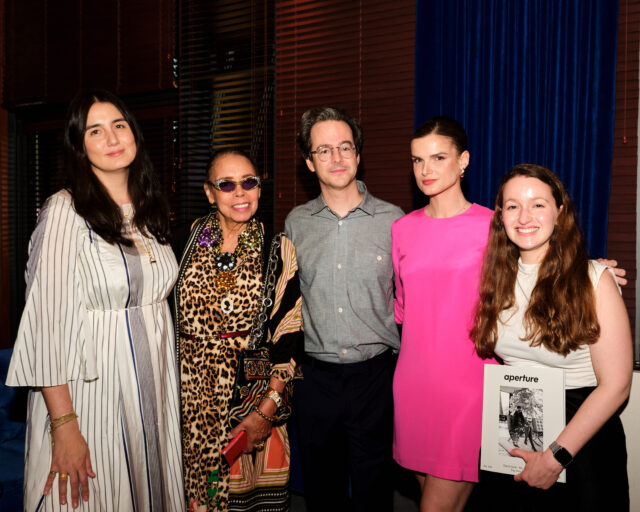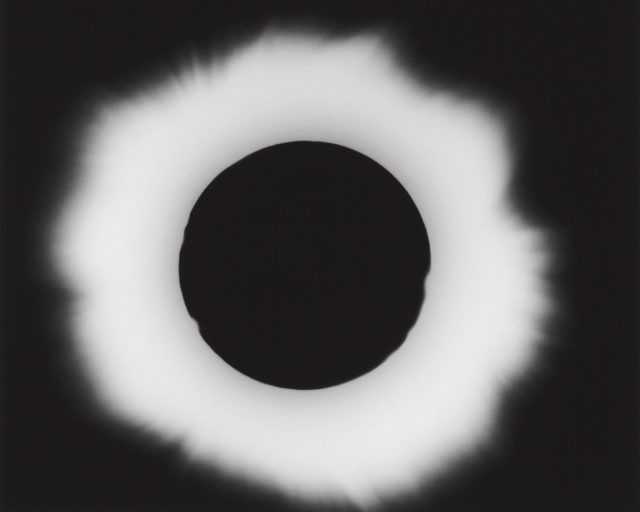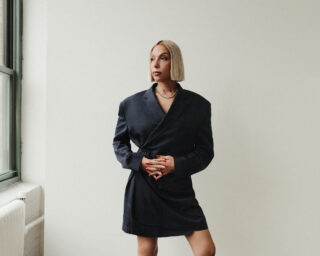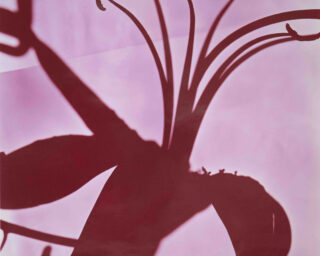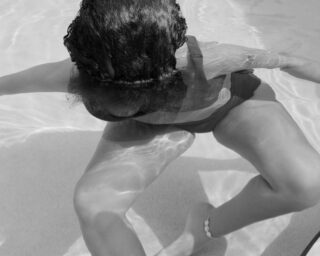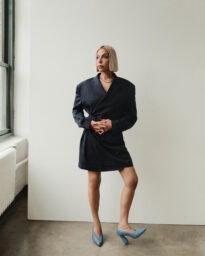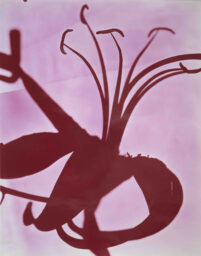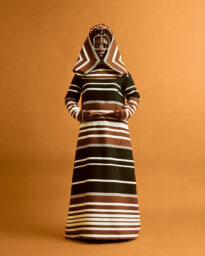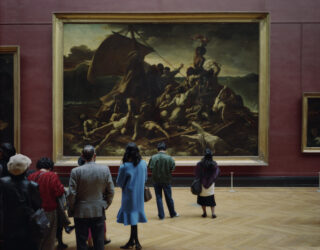For the Camera
Posing, role-playing, or staging a tableau: the impulse to perform has long been a fixture of photography. Beginning in February, a new exhibition at Tate Modern explores how performance artists use photography – and how photography is a performance itself.
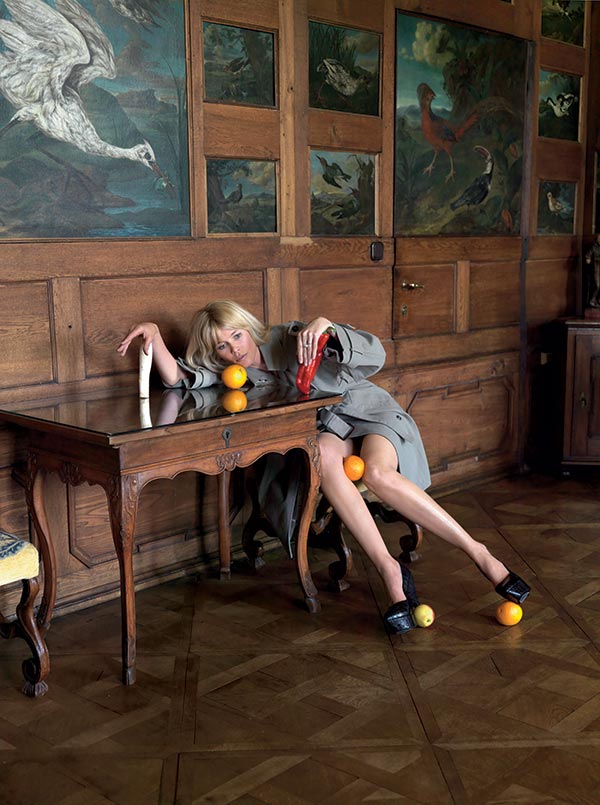
Erwin Wurm, Untitled (Claudia Schiffer), 2009. Courtesy Galerie Thaddaeus Ropac
From the first days of the first photographs, those taking the pictures and those being pictured were fully aware of the performative potential of the new enterprise. Consider the strangely stilted tableaux that William Henry Fox Talbot arranged on the grounds of his home, Lacock Abbey, in the 1840s: his friends and family posing as, well, friends and family, but nevertheless acting their own roles as best they could in bright sunlight under the cold eye of the camera. These, surely, were some of the first people ever to “pose” as themselves, as countless others have done for the camera ever since. But as well as performances aimed at the representation of some kind of natural life, there are also, in the earliest photographic experiments, something that we can recognize today as truly performative works.
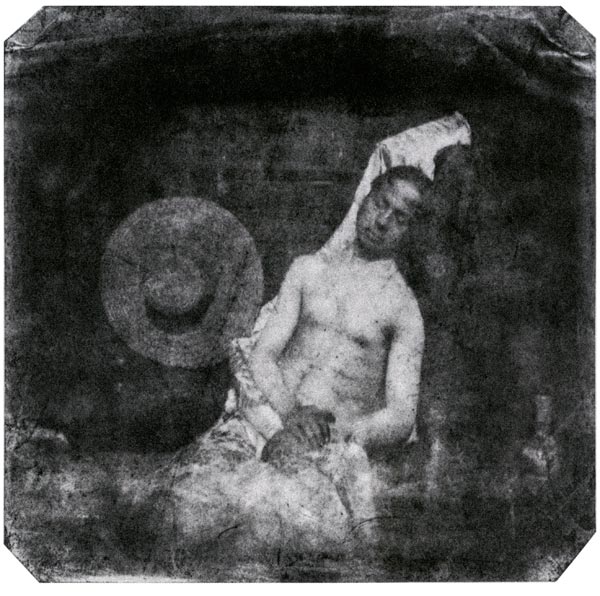
Hippolyte Bayard, Le Noyé (Self-portrait as a drowned man), 1840 © SFP
Perhaps the earliest of these coincided with the 1839 advent of the medium: Hippolyte Bayard produced Le Noyé (Self-portrait as a drowned man) in October 1840. A direct positive print on paper (and therefore an easier and cheaper alternative to the metal daguerreotype), Bayard’s self-portrait is not only a technical masterpiece but a conceptual one. It shows the inventor of the process, slumped as though sleeping, naked from the waist up, like Jacques-Louis David’s 1793 painting of the assassinated Marat; Bayard’s strangely dark hands a testament to both chemistry and hard work, crossed in peaceful resignation on his lap. But it is the title that completes the work, referring the viewer (whomever Bayard imagined that might have been) to the hopeless plight of the sitter: Bayard claimed to have invented photography before Daguerre, who received all the credit for the invention. In the photograph, he appears rejected, ignored, sinking without a trace below the high watermark of Daguerre’s fame and fortune. Bayard’s silent protest is probably the earliest, and certainly the greatest, of the first real performances made purely for the camera, and existing only as a photographic print.

Eikoh Hosoe, Kamaitachi #19, 1965 © Eikoh Hosoe
There is, however, an umbilical cord of radical creativity linking this early moment in photographic history with all that followed, in which the self-portrait tends toward fantasy. Think, for example, of F. Holland Day’s incredible serial self-portrait The Seven Words (1898), in which the artist presents himself not simply as martyred (like Bayard) but as Jesus Christ, crowned with thorns and enduring the agony of the crucifixion to illustrate the final words spoken from the cross. Part of a truly epic project to photograph the life of Christ in which Day took the title role (starving himself in order to do so), Day’s Seven Words can be seen as both spiritual and blasphemous in equal measure. For although Day and his more enlightened critics, Edward Steichen included, saw this work, and indeed the project from which it was drawn, as a sacred enterprise, it was (and remains) a controversial photographic performance, decades ahead of the better-known role-playing conceptual practice that it appears to anticipate.
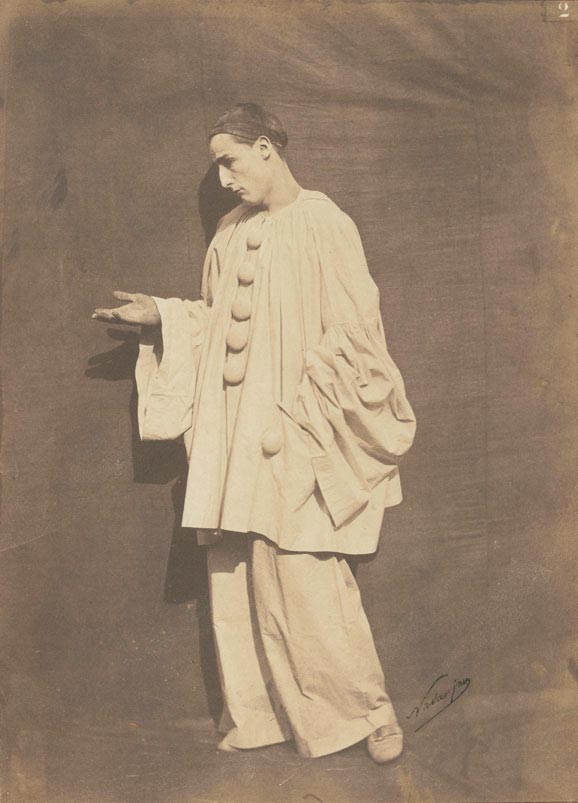
Félix Nadar, Pierrot pleading, 1854 © RMN-Grand Palais/Art Resource, New York
The ways in which the performative nature of photography and the photographic nature of performance are interrelated and intertwined is the subject of Performing for the Camera, an exhibition at Tate Modern opening in February 2016. This article, then, constitutes an initial attempt to walk (and blur) the line between the photography of performance and performative photography, circling around the question of when a photograph records a performance versus when a performance depends entirely on the photographic act, aiming not to present a hierarchy but instead to raise questions about the symbiosis at the heart of an apparent opposition that runs through the medium from its inception to the present day.
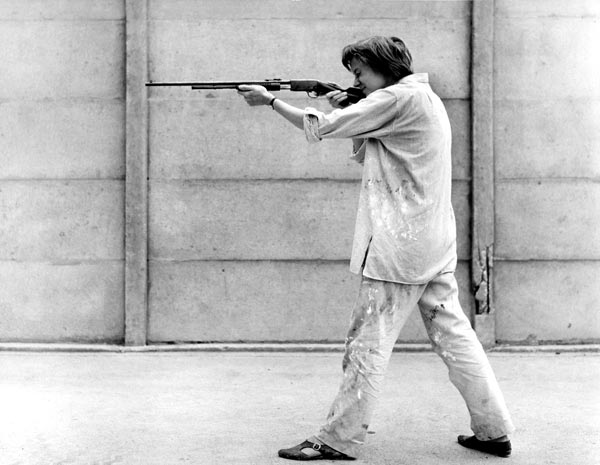
Shunk-Kender, Niki de Saint Phalle shooting, unidentified location, 1960s © J. Paul Getty Trust, Getty Research Institute, Los Angeles
Consider performances at which a photographer happened to be present: there is much to be learned about the photographic potential in what only appears to be the subordinate role of the photographer. Harry Shunk and János Kender, or Shunk-Kender, as they are known, started out as photographers in the conventional sense (on the streets of Paris and Berlin) but then went on to become perhaps the most important official witnesses of a broad range of artistic practices, from Yves Klein’s Anthropometries in 1950s Paris to the myriad performances of a generation of artists working in New York in the ’60s and ’70s. There are many examples of the straightforward documentation of performances by figures like Eleanor Antin, Yayoi Kusama, and Marta Minujín (to name just three) but also more complex situations in which Shunk-Kender either become active participants in the events, eliciting poses or demonstrative acts, or even making the works themselves, as is the case with Klein’s 1960 Leap into the Void, which was collaged together from two negatives to produce the artist’s legendary (and illusory) dive off the side of a house. Elsewhere there are dramatically posed portraits, like those showing the artist Niki de Saint Phalle in 1961, gun in hand, both facing the lens and in profile, but not actually, as it happens, making one of her Feu à Volonté (Shot canvases), which resulted from that particular performative process.
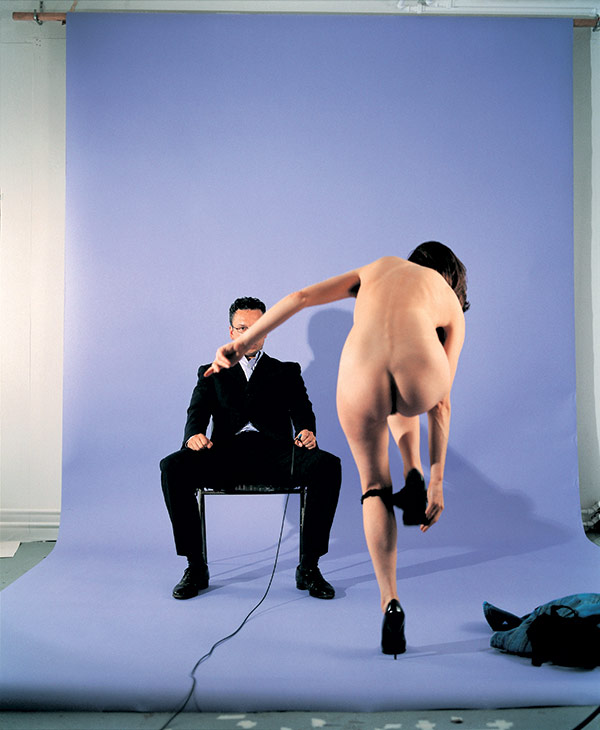
Jemima Stehli, Strip No. 5 Dealer (shot 2 of 6), 1999. Courtesy the artist
More fascinating still are those moments in Shunk-Kender’s work when they begin with a “document” of an act (a live performance by Yves Klein or Merce Cunningham), then transpose this material, in the darkroom, into something else entirely. Such photographs have a relationship to performance that is like that of an amplified echo to an original sound: related, for sure, but absolutely distinct and different in tone and resonance. In one of the most dramatic examples of their practice, Shunk-Kender solarized the forms of Cunningham’s dancers (performing Nocturnes in Paris in 1964) almost to the point of abstraction, until the precisely choreographed figures from a real performance became merely glowing bodies of light; entangled, entwined, and yet perfectly balanced as photographic compositions.
To read the full article, buy Issue #221, Winter 2015, “Performance” or subscribe to the digital archive.










